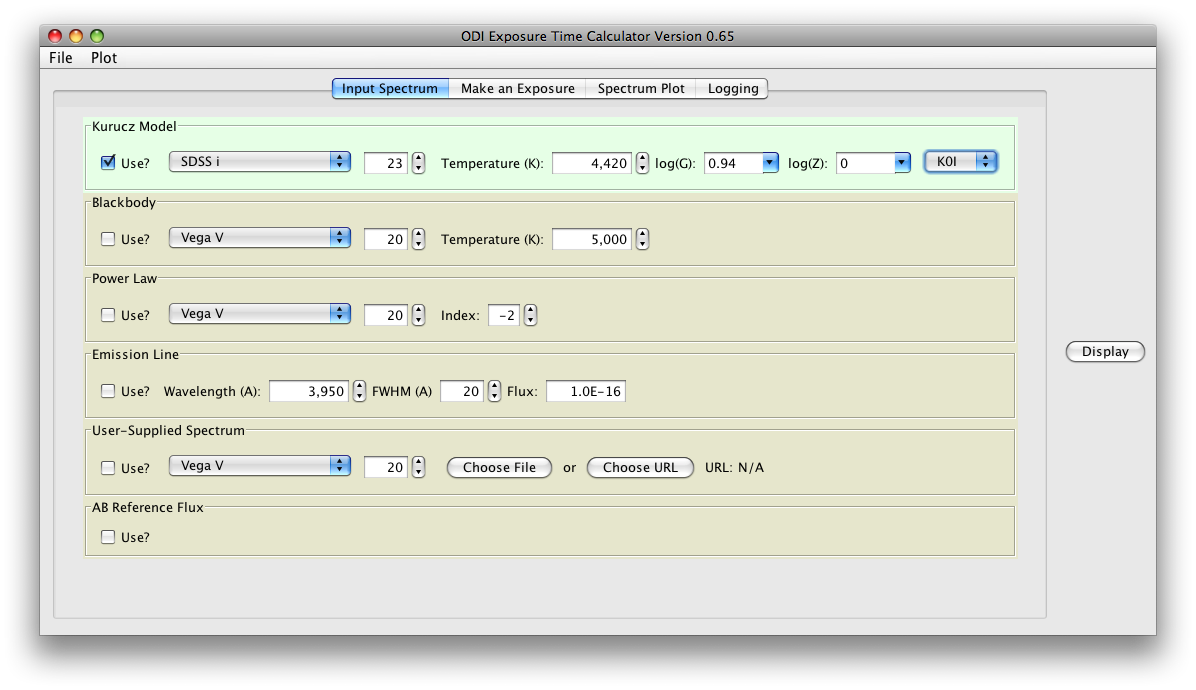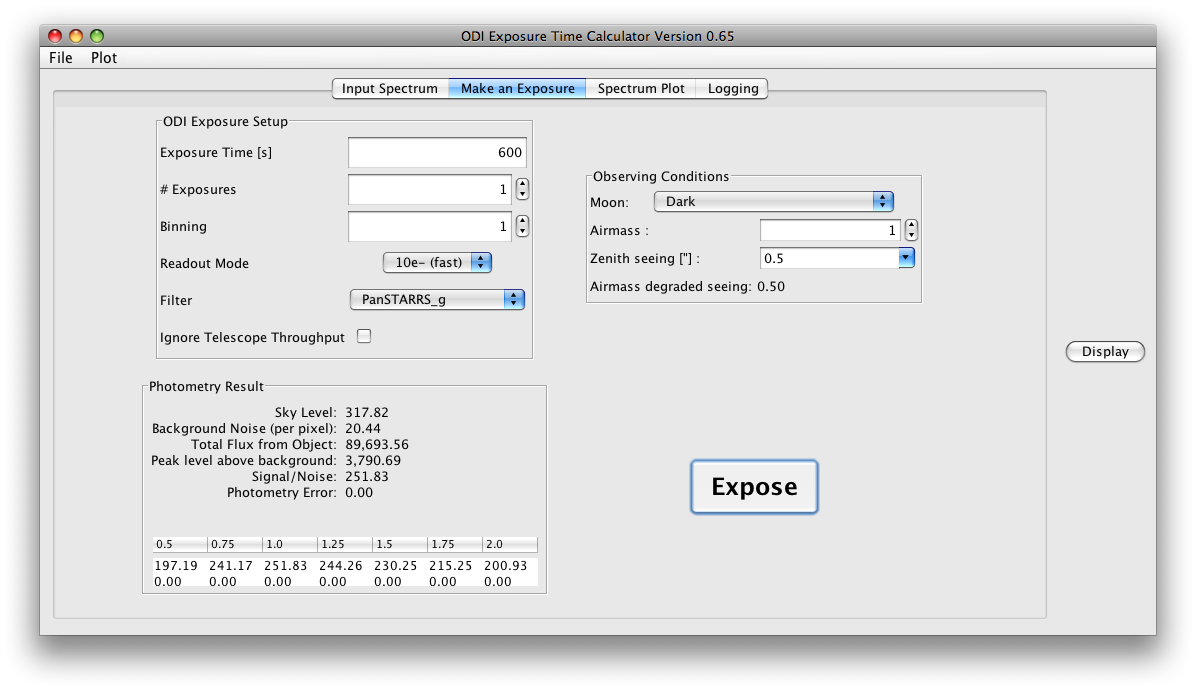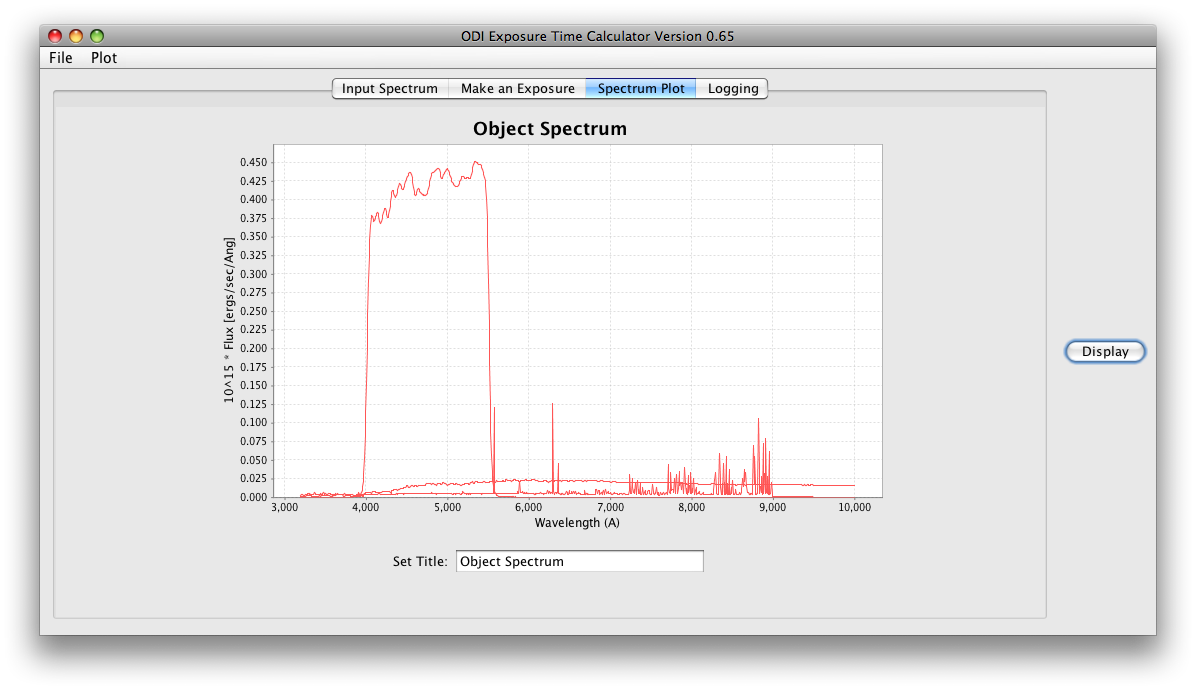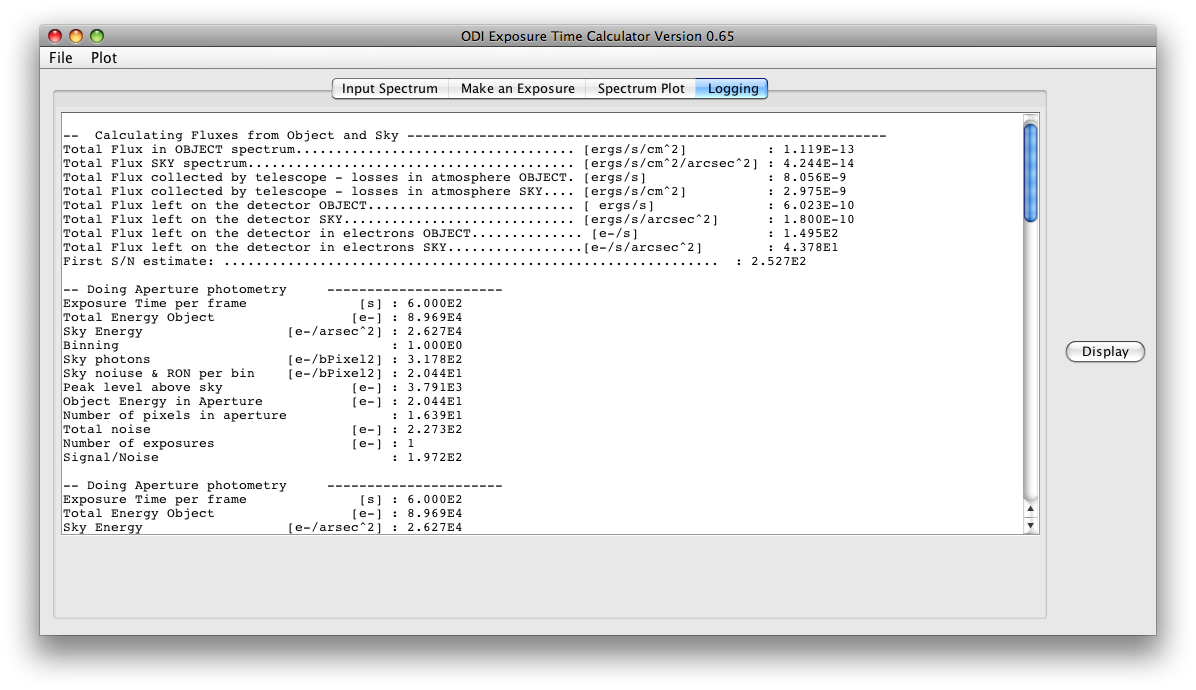
- About WIYN
- Observing at WIYN
Available Instruments
Optical Imaging
Infrared Imaging
Spectroscopy
Observing Tools
Observing Planning
At the Telescope
After Your Run
- Internal Use
WIYN Oversight
Calendars
ONE DEGREE IMAGER (ODI)
ODI Exposure Time Calculator
Click here to start the ODI Exposure Time Calculator System Requirements
Java 1.5 (or newer) and Java Web Start are required to run the Exposure Time Calculator (ETC). A relatively fast machine is helpful because a complete model of the instrument will be calculated. Any system supporting Java and Java Web start can be used to run this software.
Warning: This software is an alpha release and results have not yet been verified.
Introduction
The ODI ETC is an end-to-end simulation of the ODI system. It contains wavelength-dependent throughput models of all optical components of ODI and the WIYN telescope, and the quantum efficiency prediction of the detector. Based on flux-normalized input spectra, the ETC will calculate the photon flux received by a detector and calculate a signal-to-noise ratio for an exposure of a point source through aperture photometry. The process is as follows:
- Select your input spectrum and flux normalization.
- Set up an exposure and check the signal to noise.
- Iterate until satisfied with the result.
The ETC is divided into four major panels which are accessible through tabs:
Spectrum Selection Tab
You can choose from a variety of input spectra in the ETC. Check the Use button of a spectrum type and choose an appropriate normalization. Note that the normalization in photometric systems is currently done at one single wavelength; an absorption line falling onto the reference wavelength could fool you! Note that if you select more than one spectrum, all selected spectra will be added in the input. A user-supplied spectrum can be specified, as long as it only contains two columns of numbers (wavelength in Angstrom and flux in Fnu), and no header or footer information!

Exposure Tab
This panel controls the exposure parameters. Enter the exposure time, number of exposures, binning, and the readout mode. Standard readout mode will be the fast 10 e- readout noise mode, but we plan to implement a slow, low noise mode. However, its characteristics are pending. You can enter the filter of your choice. For engineering purposes, we included the SDSS system throughput curves for comparison with ODI. To use them, you must click on "Ignore Telescope Throughput".
Press the Expose button to simulate the exposure. The results will be displayed in the lower area of the pane. First, you will see parameters such as sky level per pixel element (which can be two physical pixels large in binning mode). Then the total number of detected photons from the object is shown, and how much it peaks above the background level.
Signal to Noise
In the table at the bottom of the pane, the signal-to-noise of the exposures is displayed for a variety of apertures. Column headers show the used aperture radius in units of the current seeing FWHM. Depending on the luminosity of your object, the optimum aperture varies and is smaller for faint sources since the background noise is dominating earlier. The table first shows the signal to noise, and then the expected photometric error, which relates to the SNR as error = 0.92 / SNR. The text area is currently displaying the signal to noise of the smallest aperture. At some point it will show the best SNR at the most efficient aperture.

Graph Tab
The display panel shows the selected input spectrum and sky spectrum, together with the ODI and telecope system throughput curve. Note: the display is only updated when you press the Display button at the right. When changing relevant input parameters (e.g., source spectrum, moon phase, filer), please manually press the display button to update the graph.
Automatic scaling is not yet supported; however, the graph can be manually rescaled with your mouse: Left-click anywhere in the graph and drag the mouse to the upper left, and release it. The graph will be rescaled. You can zoom in by dragging the mouse from the upper left to the lower right. Right-clicking opens a menu that allows you to save the image.

Logging Tab
The logging tab shows additional information about the flux normalization and photometry process. Here you can check the number of each calculation step, or access intermediate results if you need them.

Limitations
The software has not yet been verified with real on-sky observations!
The throughput and quantum efficiency tables are based on predictions, not actual measurements!
The exposure model can only handle point sources at this time.
Credit
This software is based on the SALT Exposure time calculator, which was started by Jeff Percival (UW Madison), and further developed by Christian Hettlage (SAAO).
Stellar input spectra use the 1993 Kurucz stellar atmospheres atlas .





Last modified: 03-Apr-2020 16:40:07 MST
- Observing at WIYN